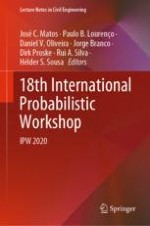2021 | OriginalPaper | Buchkapitel
Risk Assessment of a Railway Bridge Subjected to a Multi-hazard Scenario
verfasst von : João Fernandes, Monica Santamaria, José C. Matos, Daniel V. Oliveira, António Abel Henriques
Erschienen in: 18th International Probabilistic Workshop
Aktivieren Sie unsere intelligente Suche, um passende Fachinhalte oder Patente zu finden.
Wählen Sie Textabschnitte aus um mit Künstlicher Intelligenz passenden Patente zu finden. powered by
Markieren Sie Textabschnitte, um KI-gestützt weitere passende Inhalte zu finden. powered by
